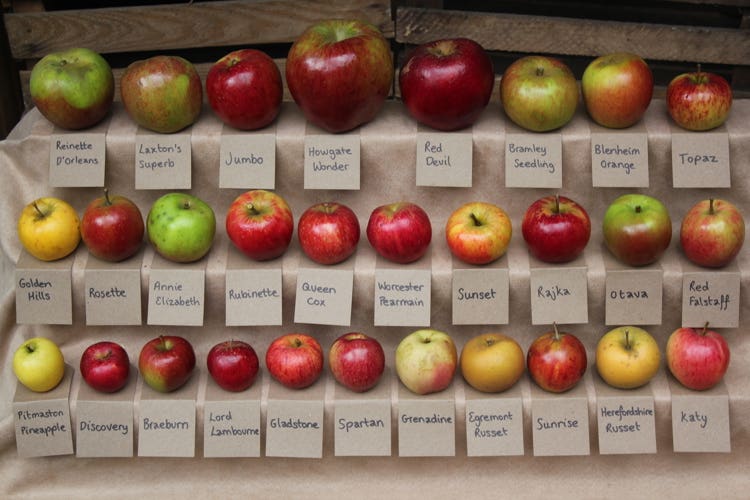Daily physical activity linked to lower cancer risk
Even light daily activity like chores or walking may cut cancer risk, new study shows using wearable tracker data.

A new study finds that daily activity—even light chores or walking—may reduce your risk of cancer. (CREDIT: CC BY-SA 4.0)
Everyday habits can shape your future health more than you might realize. A new study now offers fresh evidence that simply moving more—whether you're cleaning the house, walking to the store, or fitting in a workout—can help lower your risk of cancer.
A Look at Activity and Cancer Risk
More than half of all new cancers in wealthy countries could be avoided by changing certain lifestyle behaviors. One of the most important of these is increasing how often and how much you move. While that may seem like old advice, what’s new is how researchers are measuring your movement—and what kinds of movement matter most.
In a large, long-term study, scientists from the National Cancer Institute and the University of Oxford followed more than 85,000 adults in the UK. These adults, mostly around 63 years old, wore wrist-worn activity trackers for one week. The devices recorded all types of movement, from light chores to brisk walks and workouts. The researchers then watched for new cases of cancer in these individuals over the next several years.
What they found could change the way people think about physical activity. It’s not just about gym time or high-energy workouts. Even light movement throughout your day—like errands, household chores, or slow-paced walking—can make a real difference.
Small Steps Add Up
Over a follow-up period of about six years, 2,633 people in the study were diagnosed with one of 13 types of cancer known to be linked to physical activity. These included breast, colon, and other major cancers. The people who moved the most each day had a 26% lower chance of getting cancer than those who moved the least.
Importantly, these benefits were seen even after accounting for weight, age, smoking, and other health problems. That means the physical activity itself, not just being thinner or healthier overall, had a protective effect.
Step counts were especially eye-opening. Compared to people who walked 5,000 steps a day, those who walked 7,000 steps had an 11% lower cancer risk. At 9,000 steps, the risk was 16% lower. Walking more than that didn't bring much added protection, but the takeaway was clear: you don’t have to hit 10,000 steps to get big benefits. And walking pace didn't matter—just getting more steps was what counted.
Related Stories
Light Movement Still Matters
For a long time, cancer prevention guidelines have focused on moderate-to-vigorous physical activity—things like jogging, biking, or sports. But not everyone has time or ability for those kinds of workouts. That’s part of why global activity levels are still low.
Most people spend their days doing lower-intensity activities: working, cooking, commuting, and cleaning. These light-intensity movements (called LIPA, or light-intensity physical activity) aren’t usually counted in fitness apps or activity goals. Yet in this study, even swapping some sitting time for LIPA helped reduce cancer risk.
This is where wearable technology made a big difference. Instead of relying on people to fill out surveys about how much they exercise—which often include errors—researchers used accelerometers to objectively measure every movement throughout the day. That gave a much clearer picture of how all types of movement affect long-term health.
The study also looked at how replacing time spent sitting with movement impacted cancer risk. People who shifted even small portions of their day from sedentary time to light or moderate movement saw reduced risk.
A New Way to Think About Fitness
The findings suggest that public health advice might need an update. Rather than just urging people to aim for 30 minutes of intense activity a few times a week, it may be more helpful to promote small, frequent movements throughout the day. Not everyone will go for a run after work, but many can take the stairs, do yardwork, or walk to the store.
"These results show that every bit of activity, no matter how light, counts toward better health," the researchers wrote. "Even low levels of daily movement may help protect against certain cancers."
This makes cancer prevention feel more accessible. You don’t need a gym membership or a personal trainer. You just need to find ways to sit less and move more in the course of your normal day.
Moving Toward a Healthier Future
There’s still more to learn. This study only followed people for around six years, and the cancer cases they tracked were among types already linked to activity levels. More research will be needed to explore other cancers, longer timelines, and different populations.
Still, these results are some of the strongest yet to show that wearable fitness trackers can help paint a clearer picture of how movement affects health—and offer powerful motivation for people to make simple but lasting changes.
If you're trying to build a healthier lifestyle, consider this a green light. Walking the dog, folding laundry, or sweeping the floor might not feel like much. But over time, those small actions could help protect you from one of the world’s most serious diseases.
Note: The article above provided above by The Brighter Side of News.
Like these kind of feel good stories? Get The Brighter Side of News' newsletter.
Rebecca Shavit
Science & Technology Journalist | Innovation Storyteller
Based in Los Angeles, Rebecca Shavit is a dedicated science and technology journalist who writes for The Brighter Side of News, an online publication committed to highlighting positive and transformative stories from around the world. With a passion for uncovering groundbreaking discoveries and innovations, she brings to light the scientific advancements shaping a better future. Her reporting spans a wide range of topics, from cutting-edge medical breakthroughs and artificial intelligence to green technology and space exploration. With a keen ability to translate complex concepts into engaging and accessible stories, she makes science and innovation relatable to a broad audience.



